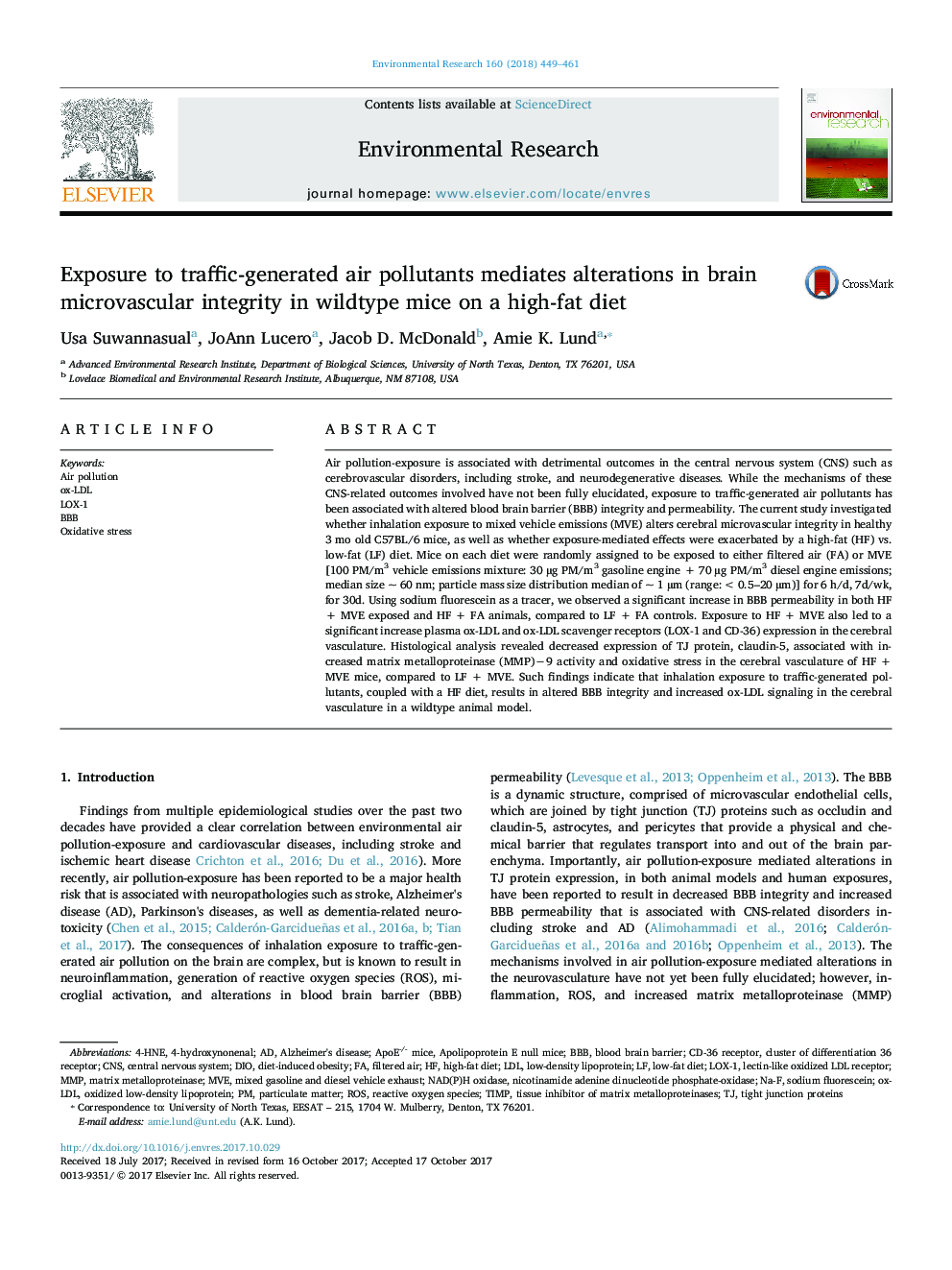| Article ID | Journal | Published Year | Pages | File Type |
|---|---|---|---|---|
| 8869297 | Environmental Research | 2018 | 13 Pages |
Abstract
Air pollution-exposure is associated with detrimental outcomes in the central nervous system (CNS) such as cerebrovascular disorders, including stroke, and neurodegenerative diseases. While the mechanisms of these CNS-related outcomes involved have not been fully elucidated, exposure to traffic-generated air pollutants has been associated with altered blood brain barrier (BBB) integrity and permeability. The current study investigated whether inhalation exposure to mixed vehicle emissions (MVE) alters cerebral microvascular integrity in healthy 3 mo old C57BL/6 mice, as well as whether exposure-mediated effects were exacerbated by a high-fat (HF) vs. low-fat (LF) diet. Mice on each diet were randomly assigned to be exposed to either filtered air (FA) or MVE [100 PM/m3 vehicle emissions mixture: 30 µg PM/m3 gasoline engine + 70 µg PM/m3 diesel engine emissions; median size ~ 60 nm; particle mass size distribution median of ~ 1 µm (range: < 0.5-20 µm)] for 6 h/d, 7d/wk, for 30d. Using sodium fluorescein as a tracer, we observed a significant increase in BBB permeability in both HF + MVE exposed and HF + FA animals, compared to LF + FA controls. Exposure to HF + MVE also led to a significant increase plasma ox-LDL and ox-LDL scavenger receptors (LOX-1 and CD-36) expression in the cerebral vasculature. Histological analysis revealed decreased expression of TJ protein, claudin-5, associated with increased matrix metalloproteinase (MMP)â9 activity and oxidative stress in the cerebral vasculature of HF + MVE mice, compared to LF + MVE. Such findings indicate that inhalation exposure to traffic-generated pollutants, coupled with a HF diet, results in altered BBB integrity and increased ox-LDL signaling in the cerebral vasculature in a wildtype animal model.
Keywords
Related Topics
Life Sciences
Environmental Science
Health, Toxicology and Mutagenesis
Authors
Usa Suwannasual, JoAnn Lucero, Jacob D. McDonald, Amie K. Lund,
